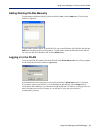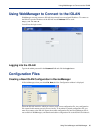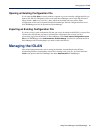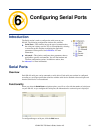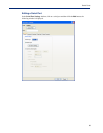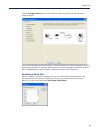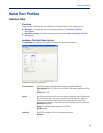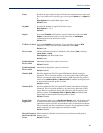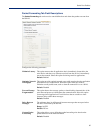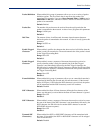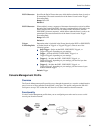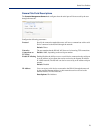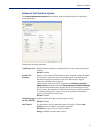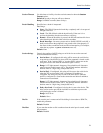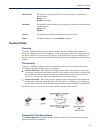
66
Serial Port Profiles
Parity Specifies the type of parity being used for the data communication on the serial
port. If you want to force a parity type, you can specify
Mark for 1or Space for
0.
Data Options: Even, Odd, Mark, Space, None
Default: None
Stop Bits Specifies the number of stop bits that follow a byte.
Data Options: 1,1.5, 2
Default: 1
Duplex Used with a EIA-485 serial interface, specify whether the serial port is Full
Duplex
(communication both ways at the same time) or Half Duplex
(communication in one direction at a time).
Default: Full
TX Driver Control Used with a EIA-485 serial interface, if your application supports RTS
(Request To Send), select this option. Otherwise, select
Auto.
Default: Auto
Flow Control Defines whether the data flow is handled by the software (Soft), hardware
(
Hard), Both, or None.
Data Options: Soft, Hard, Both, None
Default: None
Enable Inbound
Flow Control
Determines if input flow control is to be used.
Default: Enabled
Enable Outbound
Flow Control
Determines if output flow control is to be used.
Default: Enabled
Monitor DSR Specifies whether the EIA-232 signal DSR (Data Set Ready) should be
monitored. This is used with modems or any device that sends a DSR signal.
When it is monitored and the IOLAN detects a DSR signal, the line profile is
started. If both
Monitor DCD and Monitor DSR are enabled, both signals must
be detected before the line profile is started.
Default: Disabled
Monitor DCD Specifies whether the EIA-232 signal DCD (Data Carrier Detect) should be
monitored. This is used with modems or any other device that sends a DCD
signal. When it is monitored and the IOLAN detects a DCD signal, the line
profile is started. If both
Monitor DCD and Monitor DSR are enabled, both
signals must be detected before the line profile is started.
Default: Disabled
Enable Echo
Suppression
This parameter applies only to EIA-485 Half Duplex mode. All characters will
be echoed to the user and transmitted across the serial ports. Some EIA-485
applications require local echo to be enabled in order to monitor the loopback
data to determine that line contention has occurred. If your application cannot
handle loopback data, echo suppression should be enabled.
Default: Disabled
Discard Characters
Received with Line
Errors
When enabled, the IOLAN will discard received characters with parity or
framing errors.
Default: Disabled




